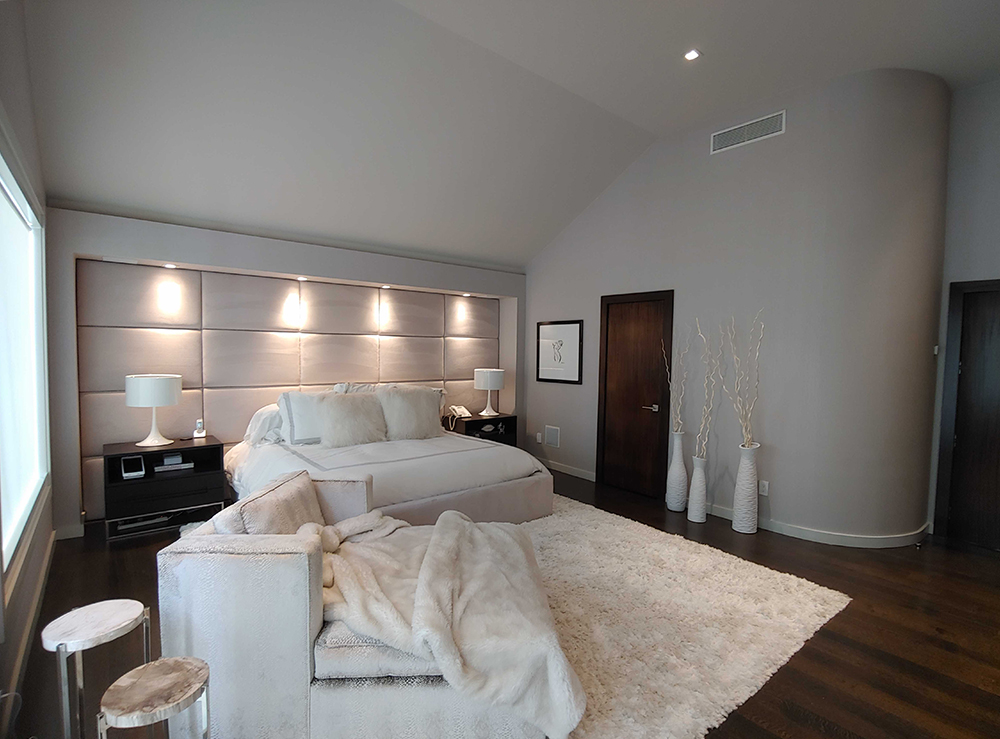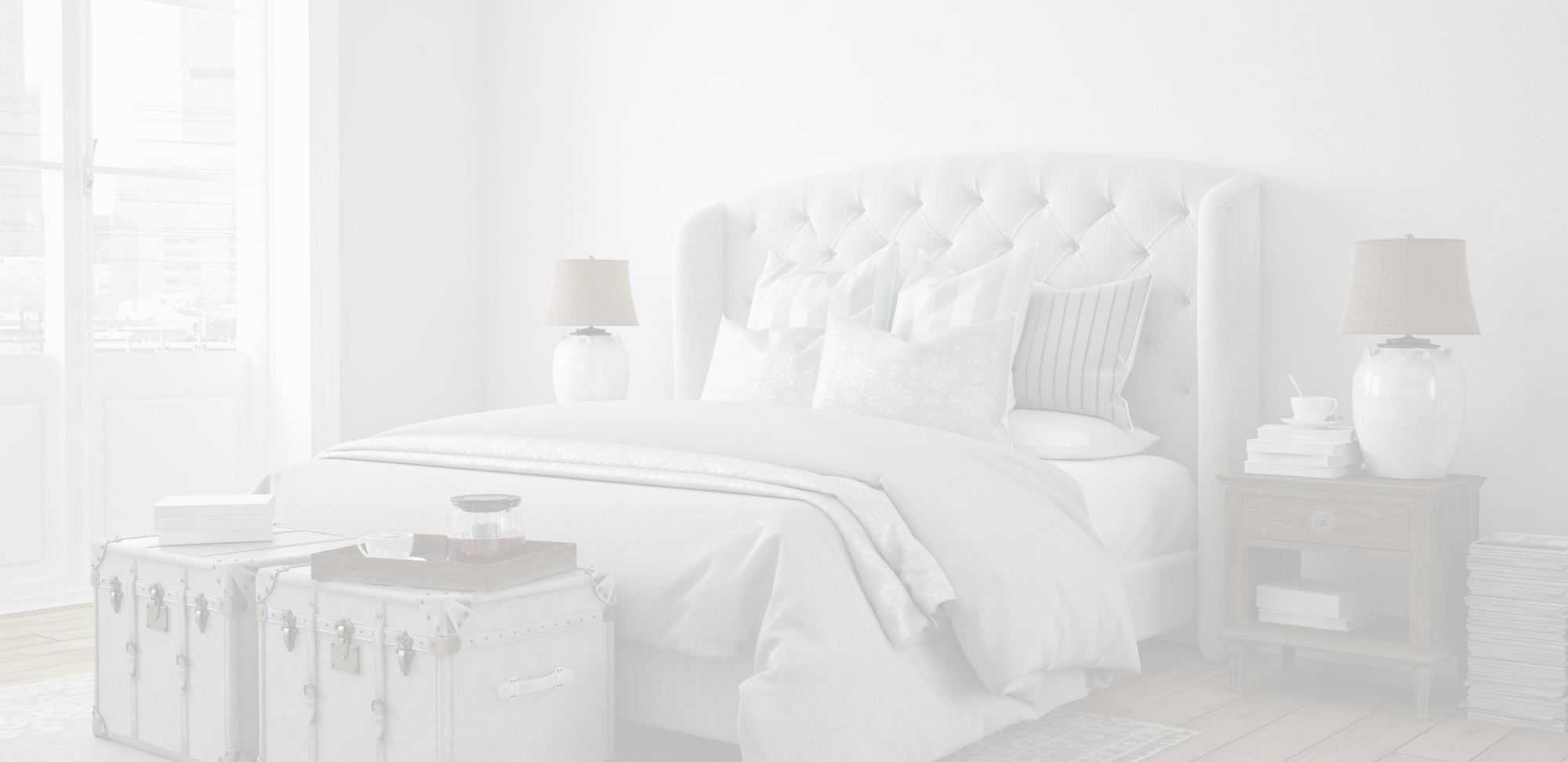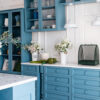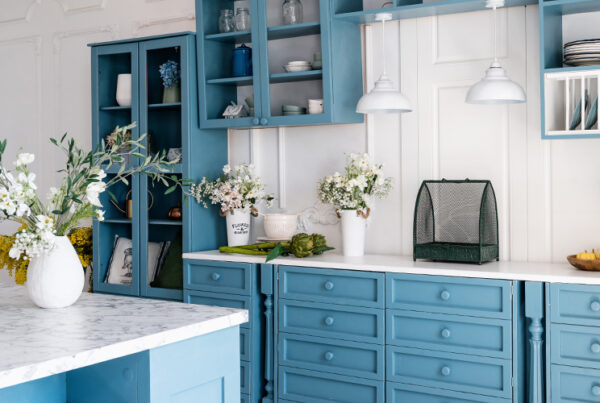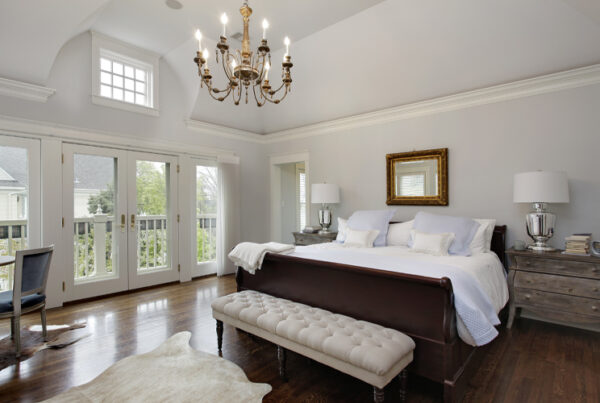
A bedroom should be a safe space, a place to unwind and relax after a long day, and most likely there will come a time when the question will hit you: What color should I paint my bedroom? Every now and then, bedrooms need to be rejuvenated, and a fresh coat of paint is usually the answer. But instead of just looking at choosing a new paint color simply for aesthetics, why not consider that choosing the right paint colors for your bedroom could have a profound effect on your emotional and physical wellbeing – as well as your sleep. Colors can evoke a wide range of moods and emotions, from cooler colors that encourage relaxation to warmer colors that stimulate the mind and make you more awake. It’s all about how you’d like to feel at the end of the day, so it’s worth it to consider the psychology of how colors affect us when choosing what color to paint your bedroom.

Colors To Use In Your Bedroom
When asking yourself, what color should I paint my bedroom, you very well know that it can be a daunting task. There are so many colors, shades, and finishes you might be wondering where to even start. The good part is you can alway consult an expert who will know how to guide you in the right direction. But to get you started, here are some ideas to consider:
If you’d like to turn your room into a rest and relaxation sanctuary, a fail-safe color for relaxation is blue. Believe it or not, the color blue has been known to create feelings of calm and serenity, as well as reduce respiration and heart rate. The muted tones have a tranquil effect on the mind and can be sleep-inducing. When in doubt, go with blue.
Another color that’s good for rest and relaxation is the color green. Green is a great choice because it’s a color that’s reminiscent of nature. It’s the same idea as filling a space with plants – greens have a calming effect on our minds. Opt for soft and natural tones of green like sage, or even blue-green to evoke ocean-like calm.
Colors To Make A Room Feel Bigger
Wondering what color to paint your bedroom, but afraid to make your room feel smaller? Not to worry – taking into account the way colors affect our psychology, you can make a room feel larger and create the illusion of spaciousness by using the color white. Crisp whites can really open up spaces while warmer tones of white evoke a sense of intimacy. Even if you’d like your walls to be a different color, using white on your ceiling can still open up the space. Don’t be afraid to ask a professional about ways to make your room feel bigger when thinking of what color to paint your bedroom.

Colors To Make A Room Feel Cozier
Maybe you’re not looking to open up a space, but instead, you’d like to make it feel more cozy and welcoming. Natural tones like rust and sage can help make it feel like an intimate space of tranquility and serenity.
Match The Color To The Feeling You Want In Your Bedroom
When thinking of what colors to avoid for the bedroom, it’s important to remember people process colors differently. That being said, if you’d like your bedroom to feel like a space for rest and relaxation, you’ll want to avoid bright, vibrant colors that can stimulate you and keep you awake. Loud reds, oranges, and yellows have the opposite effect as cooler colors like blue and green. At the end of the day, it’s important to think of how you want your bedroom to make you feel and go from there.
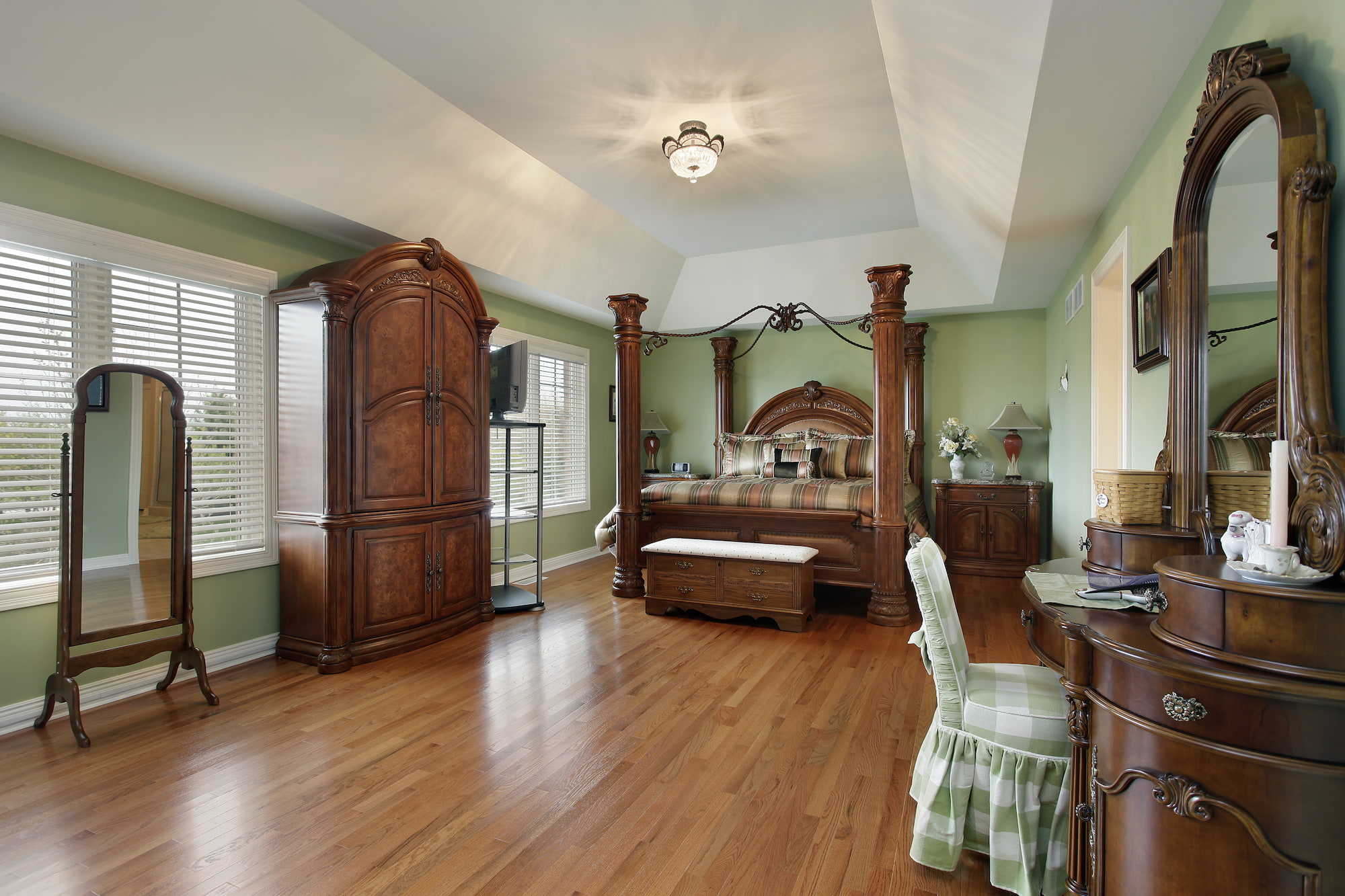
Color Palettes Using Your Bedroom Furniture
A great way to choose the right color palette for your bedroom is to pick three pieces of your bedroom furniture and choose your palette based on that. If you’ve got a taupe rug, natural wood finished bedside table, and mint green throw pillows, you might go for a muted yellow or warmer white to help tie all these elements together seamlessly. Or perhaps you’ve got white furniture, some green houseplants, and some natural wood floors – you could go with a light grey on your walls to really showcase those pieces. Try experimenting with different color palettes based on your bedroom furniture, and when in doubt, don’t be afraid to ask a professional.
Using Finishes To Create Stunning Visual Effects
Now that we’re all warmed up talking about color let’s not forget about the finish! Gloss, semi-gloss, satin, and matte paint finishes can dramatically affect a room as much as the color itself. When thinking about functionality:
- flats tend to be more stain resistant
- satin doesn’t draw attention to imperfections and is scrubbable
- semi-gloss and gloss traditionally have been used more for trims to accent curves in molding
That being said, you can have fun using different combinations of finishes. For example, try using a flat on the walls but a semi-gloss or gloss on the ceiling to create a matte and sheen contrast. The ceiling will feel higher the more light reflective it is. Or you could paint one wall flat and the adjacent one in semi-gloss, creating a velvet or corduroy effect. Remember that the glossier a surface is, the more attention will be drawn to it, but used strategically, these combinations can enhance your bedroom architecturally and accentuate its best features.
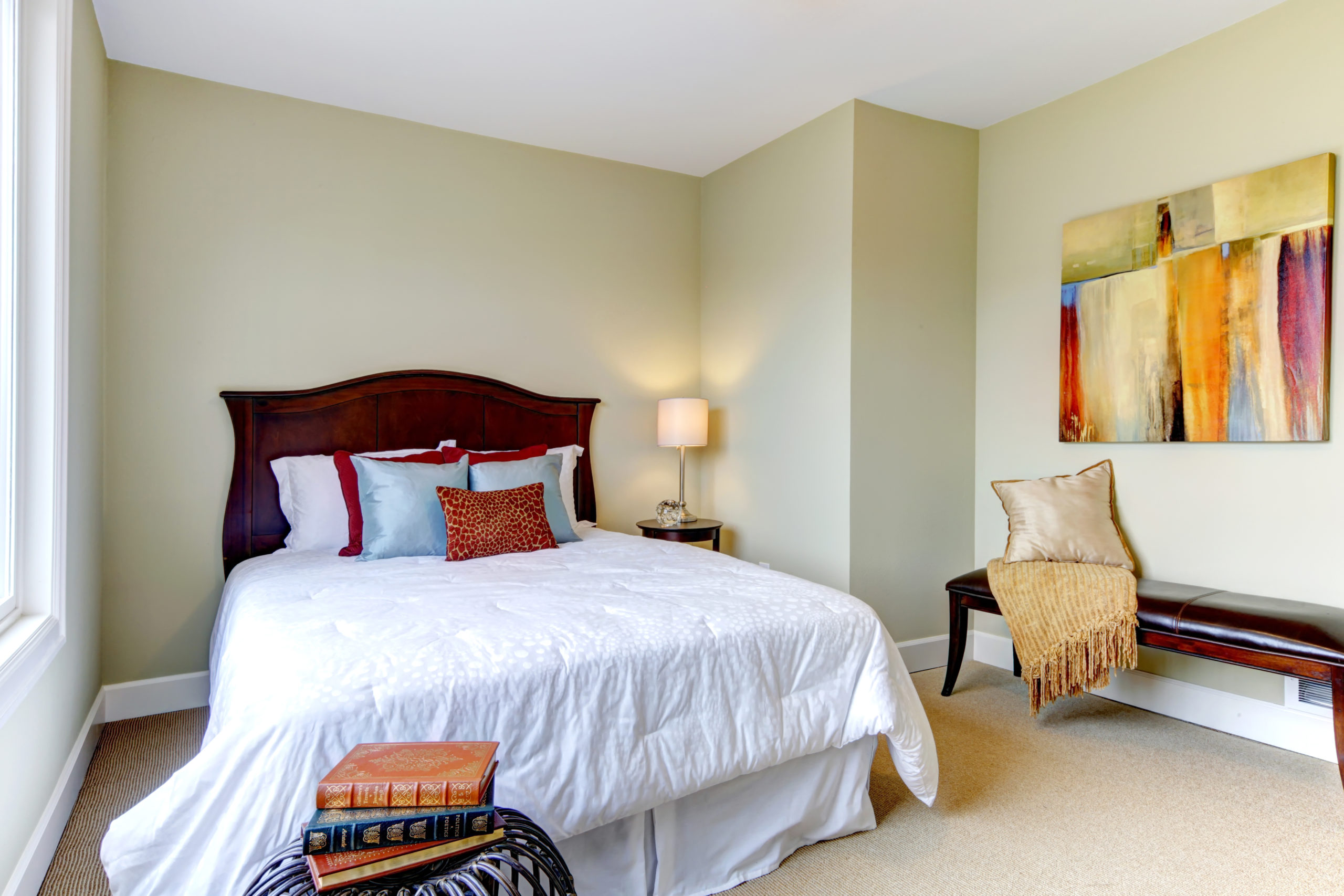
Create Flow For Open Plan Spaces
Say you ask yourself, what color should I paint my bedroom? However, you live in a studio where your bedroom becomes your living room, kitchen, etc. “Zoning” is an excellent way to create flow for space with different functions within four walls. Rather than just painting all four walls the same color, try incorporating different tones of the same color (colors that have been softened into more muted or dustier values) and applying them to the different “zones” of your living space. The idea is that the colors will create a sense of continuity, thus tying all your different areas together in a subtle yet tasteful color bow.
The 60-30-10 Decorating Rule
A good lens in which to view space when deciding what to paint your bedroom is the 60-30-10 rule that interior decorators like to use:
- 60 percent of the color in a space typically comes from walls
- 30 percent typically comes from furniture, floor coverings, and window treatments
- 10 percent typically comes from accent pieces like artwork and accent pieces.
Therefore, don’t be afraid to bring some life to your walls.
Don’t Forget About Primer
This may seem minor, but it’s an essential and fundamental step: don’t forget about choosing a high-quality primer for all of your painting projects. Using a high-quality primer will ensure no interference from past colors, as well as helping your color to last longer and be more durable. Remember to consult a professional when choosing the right paint and primer combination best suited for your painting project.
